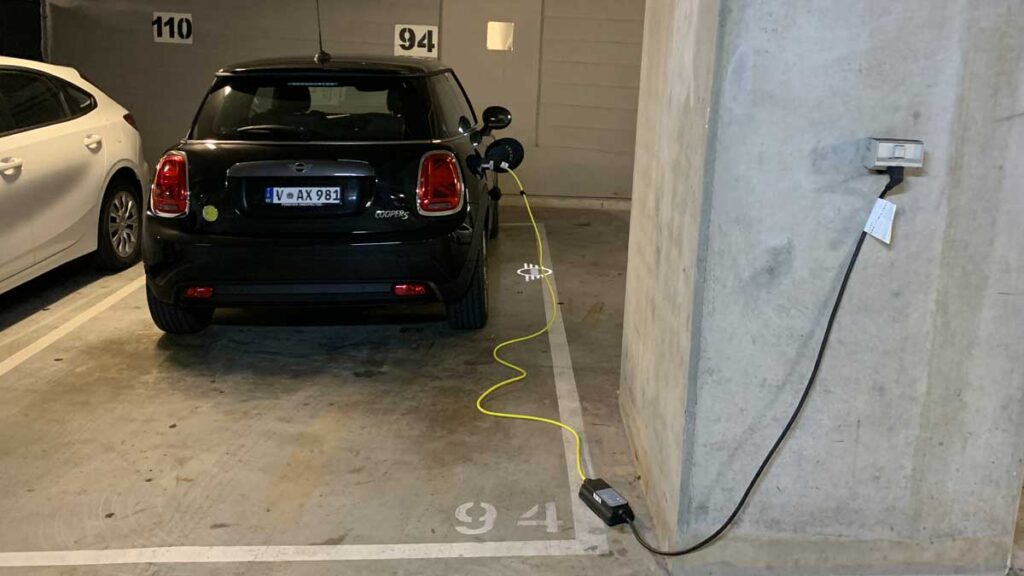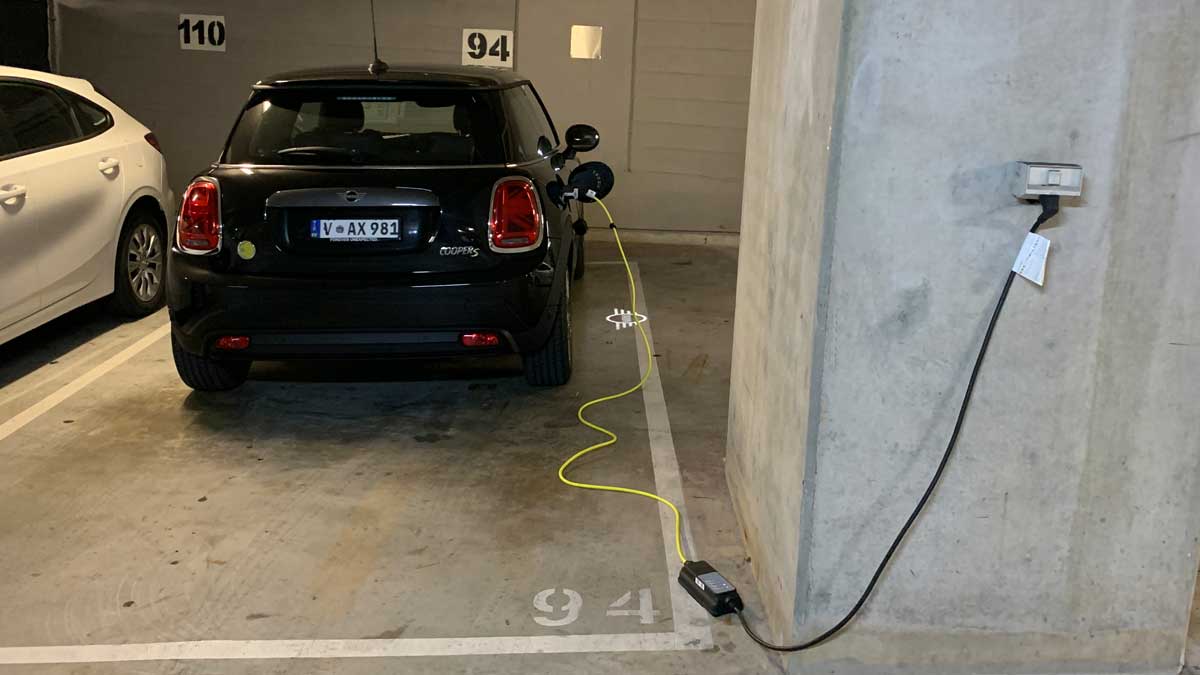The challenges that high-rise buildings pose for electric vehicle (EV) charging infrastructure in urban landscapes. the future of EV charging in Buildings-laden cities! Why high-rise Buildings BAD for Electric Vehicles?

Introduction – Why high-rise Buildings BAD for Electric Vehicles?
In a city where skyscrapers predominate, charging an electric vehicle is not as simple as it would appear. We reveal the hidden challenges that electric vehicle (EV) owners have when residing and working among tall buildings, ranging from a lack of parking spots to intricate infrastructural barriers.
In this investigation, we address how vertical living affects the availability of charging stations, examining how a key barrier to the widespread use of electric vehicles may be the absence of easy charging choices in crowded regions.
What solutions are being proposed to overcome for changing Electric in high-rise Buildings? Could smart technology and creative urban design open the door to a more EV-friendly urban environment? Find out as we analyze the current state of affairs and the potential future developments that could revolutionize EV charging in metropolitan areas.
In light of the global transition towards sustainable transportation, we must tackle the pragmatic obstacles preventing the smooth assimilation of electric vehicles into our everyday routines.
Why high-rise Buildings BAD for Electric Vehicles?
I live in a small building where there is a ground flow and three above it. Recently one of our neighbors decided that he wanted to buy an electric scooter but before buying the scooter he wanted to understand how the charging solution is provided. Can go first from his third-floor house The solution that came out was that he could park his car in the compound at a place that had his own window above it and then from there a long charging cable could be extended, about 30 feet long, which would reach his scooter.
It will charge it but they were facing multiple problems with it. The first thing is that the charging cable is expensive because it is not a normal cable that charges the EVs, these are high-voltage cables. The second thing is that The site facing their window here was the kitchen and inside the kitchen They would have had to install a fast charger provided by the company, which would have used up valuable space, and had to have wrapped up wires there, and basically could have spoiled the aesthetics as well as the utility of the kitchen. This was second only to charging.
How to Charge EVs (Electric Vehicles) in Buidling\ Apartment ?
The solution was that they would extend the cables from the meter box on the ground floor to the fast charger box provided by the company, but at this time the problem arose that the already existing meter box of the society and its members is crapped. It is in a small space and hence no special space is left. To install such a fast charger and hence if it is installed outside then it will come on some other person’s wall and they obviously did not want this thing. Due to many such problems, there were many back-and-forth solutions. try to remove
It happened but in the end, no good solution could be found and finally, they canceled the decision to buy an electric scooter i.e. basically due to a lack of proper charging solutions inside the apartments, EV sales got canceled in countries like the US. The lowest EVs in this place to date But the number of EVs sold directly reflects this ratio and that city is New York. In New York, fewer EVs are being sold than the entire US average and its number is also falling, reaching less than 1 per day as of today’s date. Which is a worse ratio than India behind this
One simple reason is that the charging required by EVs can only be done inside independent homes and large-scale apartment blocks are not yet ready to provide charging solutions.
How do I set up an EV charging station at home?
Setting up an EV charging station at home is a straightforward process that can be completed in a few simple steps. However, it’s crucial to follow safety precautions and seek professional assistance whenever necessary. Here’s a step-by-step guide on how to set up an EV charging station at home:
Planning and Preparation:
Choose the Right Charger: Determine the type of charger you need based on your EV’s charging requirements. Level 2 chargers are recommended for faster charging, while Level 1 chargers are suitable for occasional use.
Obtain Permits and Inspections:
Check Local Regulations: Consult your local building codes and ordinances to ensure compliance with electrical safety regulations for EV charging stations.
Electrical Requirements:
Check Electrical Panel Capacity: Ensure your electrical panel has sufficient capacity to handle the amperage requirements of the EV charger.
Hire a Qualified Electrician:
Professional Installation: Engage a licensed and experienced electrician to safely install the EV charging station and ensure proper connection to your home’s electrical system.
Choose a Suitable Installation Location:
Dry and Well-Ventilated Area: Select a location that is dry, well-ventilated, and protected from direct sunlight, rain, and other environmental factors.
Wiring and Installation:
Wiring Procedure: The electrician will install the necessary wiring to connect the EV charger to your home’s electrical system, adhering to all safety standards.
Mounting and Connection:
Secure Mounting: The electrician will securely mount the EV charger on a stable and level surface, ensuring proper alignment of the charging connectors.
Testing and Commissioning:
Safety Checks: The electrician will conduct thorough safety checks to ensure the EV charger is properly connected, grounded, and functioning correctly.
Final Inspectations and Approvals:
Local Inspection: If required by local regulations, the electrician will obtain necessary inspections from authorized inspectors to ensure compliance with safety standards.
User Manual and Training:
Understanding the Charger: Familiarize yourself with the EV charger’s operation, features, and safety instructions provided in the user manual.
Regular Maintenance:
Scheduled Maintenance: Follow the manufacturer’s guidelines for regular maintenance of the EV charger to ensure optimal performance and safety.
Why do our apartment complexes have EV charging infrastructure?
Today we will understand about providing Apart from this, we will also know how it affects the overall country. Friends, cities like Mumbai which are especially known for hosting almost all their population in apartments, have a major problem there.
Tax comes if you go to Delhi, NCR, or any other city in the country. Although the trend of skyscrapers and apartments is increasing, still people prefer to live in independent single-family housing or at least inside such houses. Live where very few people live in the same building But this is not possible in a city like Mumbai, the reason for which is that your apartment is on a higher floor, while the parking space for your car is at a very different place and that is why if you buy an electric vehicle, then To all
The basic need of charging is also not fulfilled, as I mentioned the problems, in my building there are issues in thousands and lakhs of buildings in many cities, especially in cities like Mumbai or New York, where the trend is that they are mostly apartment buildings. Of independent houses at the same time especially If we talk about old buildings, there are no systems in place to install EV charging networks. Meter boxes in old places cannot host them in many places.
But at the same time, installing fast track where there is parking is a very difficult task and all these problems stop people from buying EVs but the problem is that no special work is being done on it. Earlier there was talk of bringing a rule where this would be made compulsory. It was said that it was going to be compulsory for the developers to make arrangements for the number of parking spaces in any new apartment block so that an EV charging facility could be installed inside it, but later no work was done on it and the problem is not only this.
The problem is that in cities like Mumbai or in most of the cities of the country, due to the builder lobby, parking areas are built in a very strange manner in today’s time. Generally, if you want to do big complex extensions, then that possibility is not available at the same time. Time number of parking spaces is very limited there doesn’t need to be as many parking spaces available as there are houses inside an apartment. Less parking spaces can also be legally available inside that building, due to which is a basic necessity for EV charging.
This means that an equipped space is not available here and till now no concrete law has been made for this hence, if any charging stations are seen inside the apartment blocks, they are independent and on an external grid. Are installed and not on any individual’s meter due to which They are expensive to charge and it is impossible to add their cost to your normal bill. Not only this, but most apartment buildings have to rely on electricity infrastructure to handle the load that comes with EV charging.
And if even 10 people inside a building buy EVs, then this infrastructure will come under a lot of strain and this is one of the biggest reasons behind the decline in EV sales in big cities because the people who want independent parking, and independent electricity. Supply All these things were afforded or they lived in such houses, they were already in The usage of things has started getting saturated and those who are left are now facing difficulties in other categories, however, the developers are trying to provide today’s EV charges as a convenience or as a luxury.
They are selling it which is also a good thing but it is definitely necessary to have some law on it which has made this thing not a facility but a necessity and hopefully this thing will definitely be solved in the future.
How do I charge my EV for my apartment?
Charging an EV in an apartment can be a bit more challenging compared to a single-family home, but there are still several options available. Here are the main methods for charging an EV in an apartment:
- Discuss with your landlord or property manager:
Before exploring any other options, it’s crucial to discuss the possibility of installing a dedicated EV charging station in your apartment parking space. Your landlord or property manager may have specific rules or guidelines regarding EV charging. They may also be open to exploring the possibility of installing shared charging stations for all residents.
- Utilize a portable Level 1 charger:
If installing a dedicated charger is not feasible, you can consider using a portable Level 1 charger. These chargers plug directly into a standard 120-volt household outlet and provide a slower charging rate compared to Level 2 chargers. However, they can still be useful for topping up your EV’s battery if you don’t drive extensively.
- Seek permission to use a designated charging station:
Some apartment complexes may have designated charging stations for EV owners. Check with your landlord or property manager if there are any available charging stations that you can use. You may need to pay a fee or sign up for a specific program to access these stations.
- Utilize public charging stations outside your apartment:
If no options within your apartment complex work, you can rely on public charging stations located near your home. These stations are often found in public parking lots, shopping centers, and along major roads. However, be mindful of the availability and the potential for fees.
Here are some additional tips for charging your EV in an apartment:
- Optimize your charging schedule:
Avoid charging during peak hours when the electricity demand is higher. Schedule your charging for off-peak times to minimize the impact on your apartment complex’s electrical system.
- Educate your neighbors:
If you’re considering installing a dedicated charger, inform your neighbors about your plans and address any concerns they may have. Open communication can help build understanding and minimize potential issues.
- Consider using a smartphone app:
Many EV charging stations offer mobile apps that allow you to locate, reserve, and pay for charging. These apps can make the charging process more convenient and efficient.
- Adhere to local regulations:
Always follow the local regulations and guidelines for EV charging in your apartment complex. Respect the rules set by your landlord or property manager to maintain a harmonious living environment.
Can you charge an EV indoors?
Yes, you can charge an EV indoors. In fact, it is generally considered to be the safest and most convenient way to charge your EV. This is because indoor installations are protected from the elements, such as rain, snow, and extreme temperatures, which can damage your EV’s battery or electrical system. Additionally, indoor installations are less likely to be tripped by other electrical devices or have their cables damaged by foot traffic or pets.
Here are some of the benefits of charging your EV indoors:
- Protection from the elements:
Indoor charging stations are protected from the elements, which can damage your EV’s battery or electrical system.
- Convenience:
Indoor charging stations are more convenient than outdoor charging stations, as you don’t have to worry about weather conditions or finding a parking space.
Safety: Indoor charging stations are often installed in garages or basements, which are less likely to have carbon monoxide or other gases that could be harmful to your health.
If you are considering charging your EV indoors, there are a few things you need to keep in mind:
- Choose a safe location:
Make sure to choose a location that is dry, well-ventilated, and free from flammable materials.
- Install a dedicated circuit:
You will need to install a dedicated circuit for your EV charging station. This will ensure that the station has enough power and that it is not overloaded.
- Use a GFCI outlet:
You should use a GFCI (ground fault circuit interrupter) outlet for your EV charging station. This will help to protect you from electrical shock.
- Use a certified EVSE:
Make sure to use a certified EVSE (electric vehicle supply equipment) for your EV. This will ensure that the station is safe and meets all of the necessary standards.
Here are some examples of how to charge an EV indoors:
- Install a Level 2 charger in your garage:
This is the most common way to charge an EV indoors. Level 2 chargers can provide up to 7.2 kW of power, which can fully charge most EVs overnight.
- Use a portable Level 1 charger:
If you don’t have a garage, you can use a portable Level 1 charger. Level 1 chargers can provide up to 1.5 kW of power, which will take longer to fully charge your EV.
- Install a home energy management system (HEMS):
A HEMS can help you to optimize your EV charging schedule to avoid overloading your electrical system.
Charging an EV indoors is a safe and convenient way to power your electric vehicle. By following the tips in this article, you can ensure that you are charging your EV safely and effectively.
According to TheSaurus.com
FAQ’s – How to Charge EVs (Electric Vehicles) in Buidling\ Apartment ?
Q1: Can you charge an EV indoors?
Ans: Yes, you can charge an EV indoors. In fact, it is generally considered to be the safest and most convenient way to charge your EV. This is because indoor installations are protected from the elements, such as rain, snow, and extreme temperatures, which can damage your EV’s battery or electrical system. Additionally, indoor installations are less likely to be tripped by other electrical devices or have their cables damaged by foot traffic or pets.
Q2: How do I set up an EV charging station at home?
Ans: Choose the Right Charger: Determine the type of charger you need based on your EV’s charging requirements. Level 2 chargers are recommended for faster charging, while Level 1 chargers are suitable for occasional use:
1. Planning and Preparation
2. Obtain Permits and Inspections
3. Electrical Requirements
4. Hire a Qualified Electrician
5. Choose a Suitable Installation Location
6. Wiring and Installation
7. Mounting and Connection
8. Testing and Commissioning
9. Final Inspectations and Approvals
10. User Manual and Training
11. Regular Maintenance
Q3: How do I charge my EV for my apartment?
Ans: Charging an EV in an apartment can be a bit more challenging compared to a single-family home, but there are still several options available. Here are the main methods for charging an EV in an apartment:
1. Discuss with your landlord or property manager
2. Utilize a portable Level 1 charger
3. Seek permission to use a designated charging station
4. Utilize public charging stations outside your apartment
-

ANI YouTube Copyright Khand: A letter from All YouTubers to INDIA – Thugesh, Mohak & Rajat
-

What should I do if my Manager / TL is mentally harassing me? | Handle Mental Harassment by Your Team Leader or Manager
-

How do Female soldiers manage their Periods / Bathroom situations at War zones?

